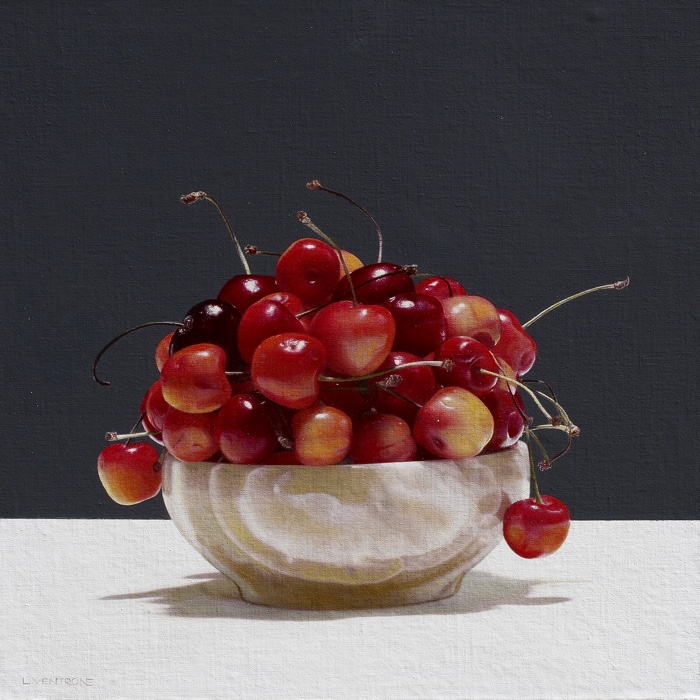
Luciano Ventrone, richiami 40×40 su tavolaFoto ©Miranda Gibilisco
THE WORKS OF LUCIANO VENTRONE TO KNOW
Among the most recent Italian masterpieces are Luciano Ventrone’s works to get to know. He is the most internationally renowned artist of the second half of the 20th century and the beginning of the 21st century.
Luciano Ventrone’s works are paintings that look like photographs and have been exhibited in the most important international museums and galleries, from Rome to Milan, from London to Singapore, from New York to Moscow and St. Petersburg.
Here are the ones you absolutely must know.
works by Luciano Ventrone
Luciano Ventrone was born in Rome in 1942 where he attended art school and, after graduating in 1964, enrolled in the Faculty of Architecture, which he attended until 1968, the year in which he decided to abandon his studies to devote himself entirely to painting.
His artistic career, spanning almost sixty years, began with geometric experiments, passing through informal and programmed art, up to his long research into the various aspects of Nature with his personal ‘realism-abstractism’ for which he became famous worldwide.
THE WORKS OF LUCIANO VENTRONE
Galaxies is a large still life measuring 90 x 130 cm, completed by Luciano Ventrone but without his signature as the artist died before he could affix it.
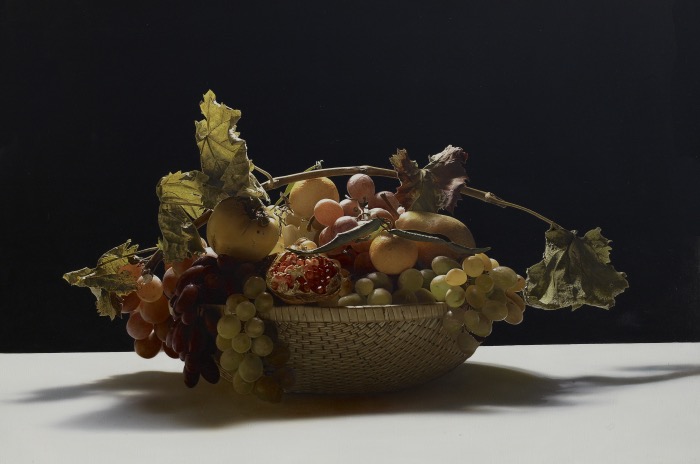
Luciano Ventrone, Galassie. 90×130 21 Foto ©Miranda Gibilisco
Baskets of fruit, grapes and vine leaves, apples, lemons, but also individual pomegranates or chopped watermelons made Ventrone famous as the ‘Caravaggio of the 20th century’.
His was a unique talent that rivalled the great still life artists of the past.
Forme nella luce (Forms in the Light) is a work that allows us to observe the use of light and the skill in applying colours.
It is precisely the knowledge and choice of the right colour that is the basis of Luciano Ventrone’s work.
The relationship between the different colours used on the canvas is what gives the work an effect of three-dimensionality.
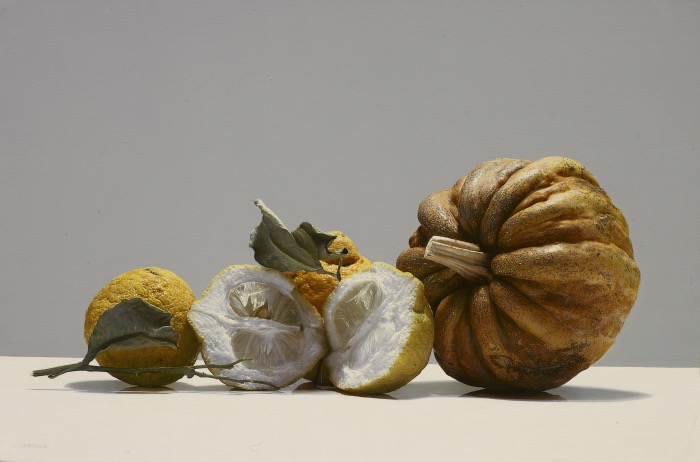
Luciano Ventrone, forme nella luce. 60x90Foto ©Miranda Gibilisco
Luciano Ventrone’s works have evolved artistically and thematically throughout his career.
In his first period of activity, dating between 1960 and 1970, Ventrone painted geometric and abstract motifs, inspired by microscopic observations of cells during anatomy lessons at the Liceo Artistico.
In the 1980s, Ventrone painted the canvases that brought him to the attention of critics and the public: the first still lifes that prompted him to pursue a new artistic file.
His artistic career is described at the Luciano Ventrone house-museum, which houses some of his works, his personal and working objects and also his memory.
Observing the work Travellers 2, one understands why Luciano Ventrone’s art is often traced back to the strand of hyperrealism.
As Federico Zeri stated:
“described with even exasperated lucidity, his vegetables are defined by a skilfully violent light, which is not that of an August sun, but rather that of the studios where the film image is made.
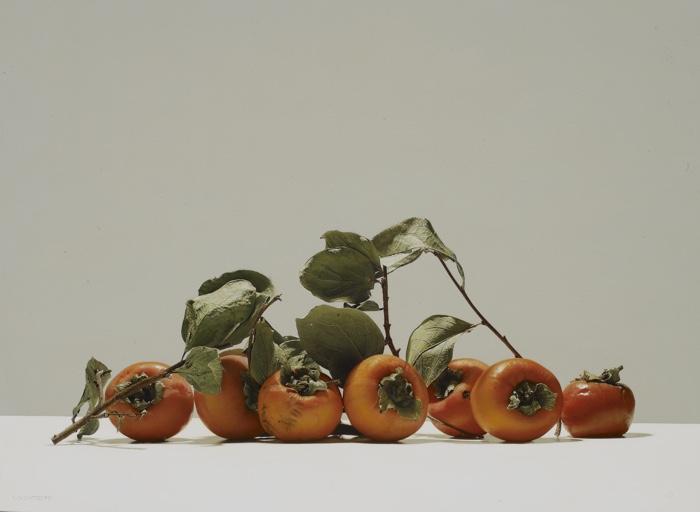
Ventrone, viaggiatori 2 60x80Foto ©Miranda Gibilisco
In Ventrone’s technique, photography is a starting point, from which begins a process of abstraction of the subject that is only manifested through light.
From photography, Ventrone is able to capture details that are not visible to the human eye and transforms the works into evocative worlds full of experience and emotion.
His choice of subjects links him to the great painters of the past, as in Last Chance.
However, it is his attention to the application of paint and his treatment of colour and light that place him among the contemporaries.
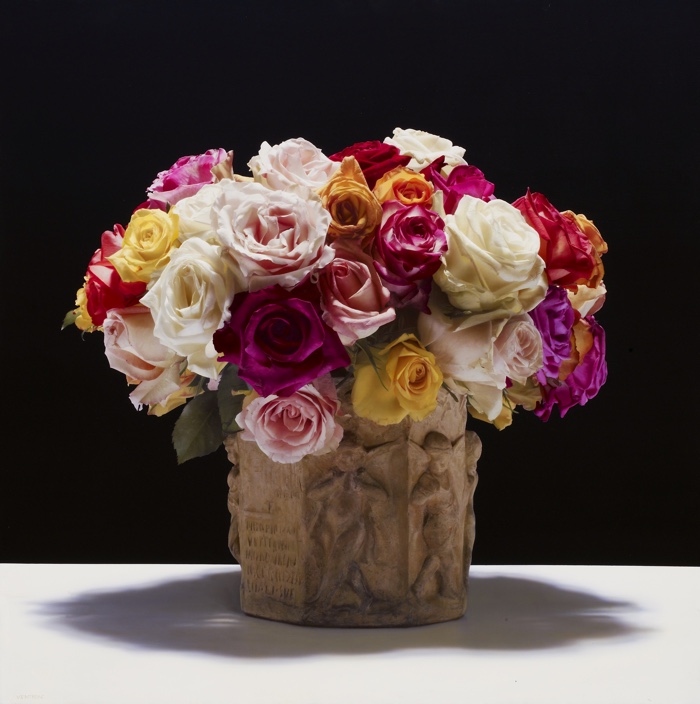
Ventrone, last chance 150×150 Foto ©Miranda Gibilisco
Luciano Ventrone often repeated:
“The study of painting is not the mere representation of the object but is colour and light: the right relationships between the two give form in space. The subject is not to be seen as such, but abstractly’.
It is his search for the invisible that has attracted the attention of critics and art historians over the decades, from Federico Zeri to Giorgio Soavi, Roberto Tassi, Achille Bonito Oliva, Vittorio Sgarbi, Marco Di Capua, Antonello Trombadori, Edward Lucie-Smith, Angelo Crespi, Beatrice Buscaroli, Evgenia Petrova and Victoria Noel-Johnson.
Luciano Ventrone died in his Collelongo (province of L’Aquila) on 16 April 2021.


ho perso la mostra dedicata a LUciano Ventrone, purtroppo… Dove faranno la prossima? Grazie
Si può visitare la casa dell’artista nel frattempo e chiedere alla Fondazione Ventrone quali sono i prossimi appuntamenti in programma. Il link della Fondazione si trova nel post che ho dedicato alla casa-museo dell’artista: https://www.theartpostblog.com/casa-museo-luciano-ventrone/